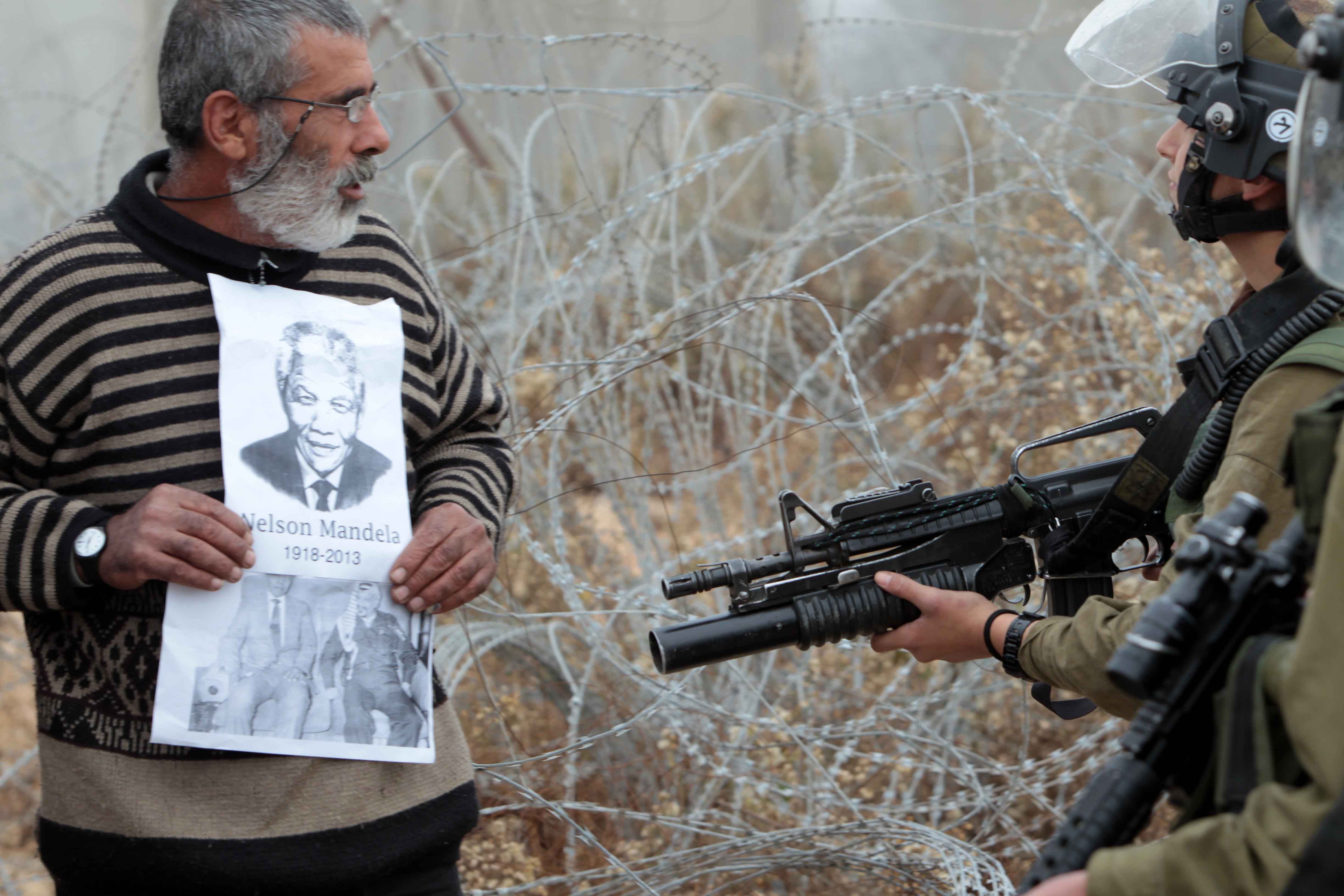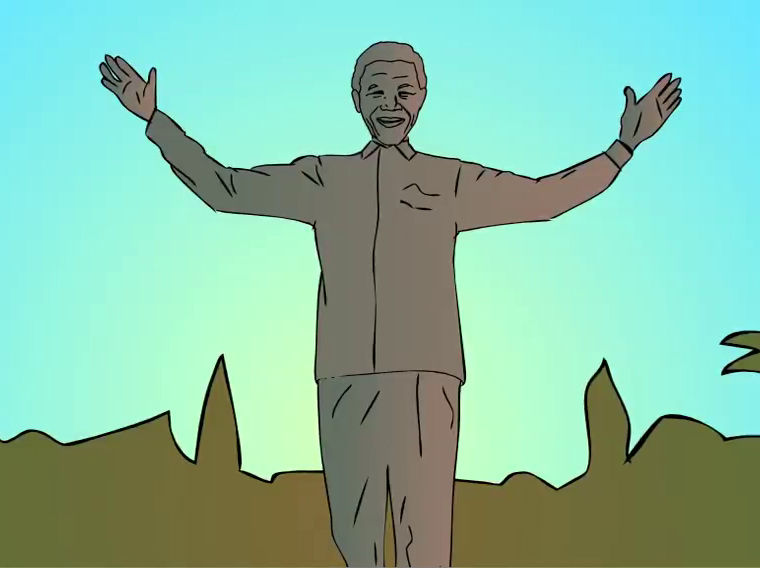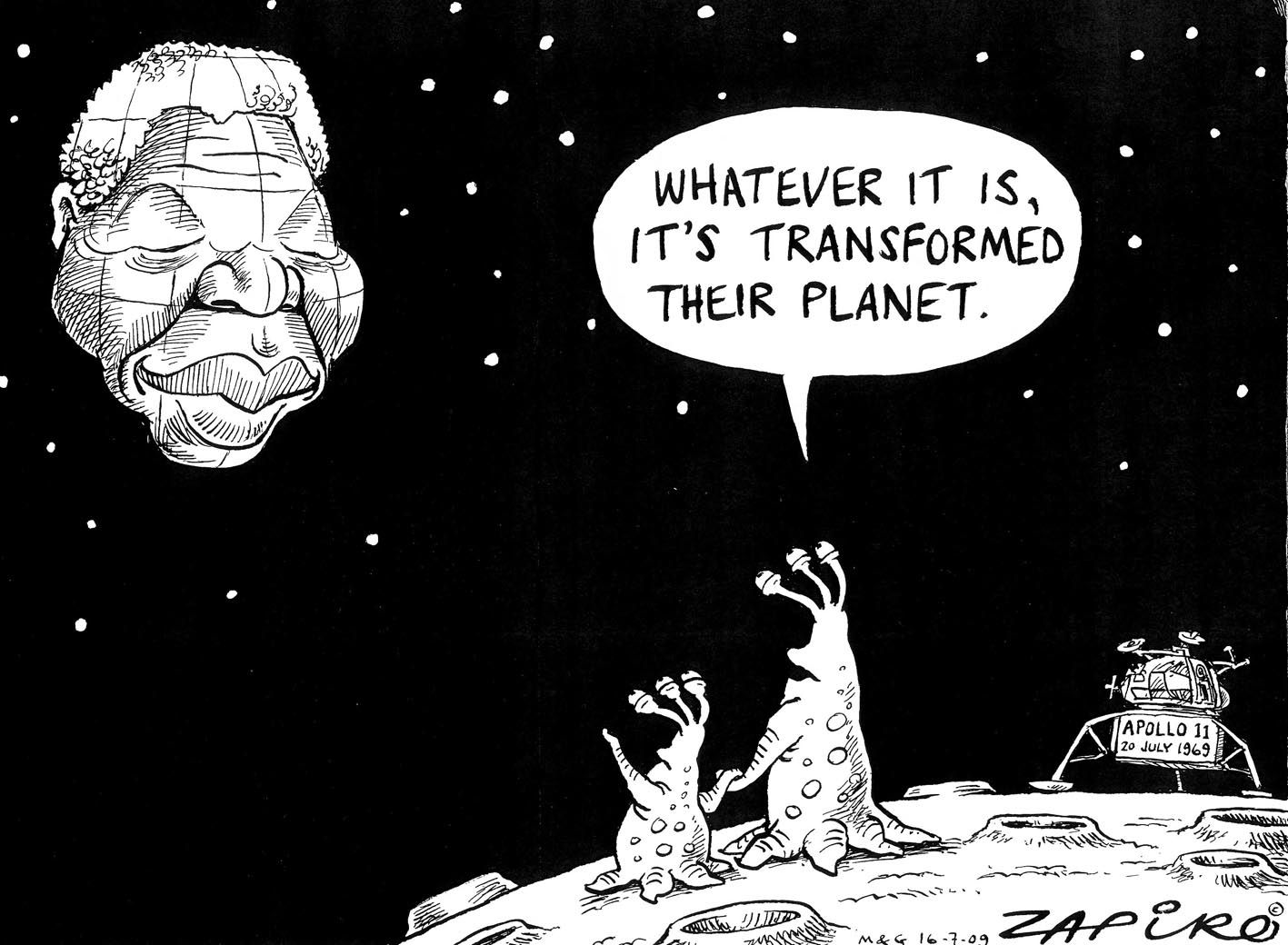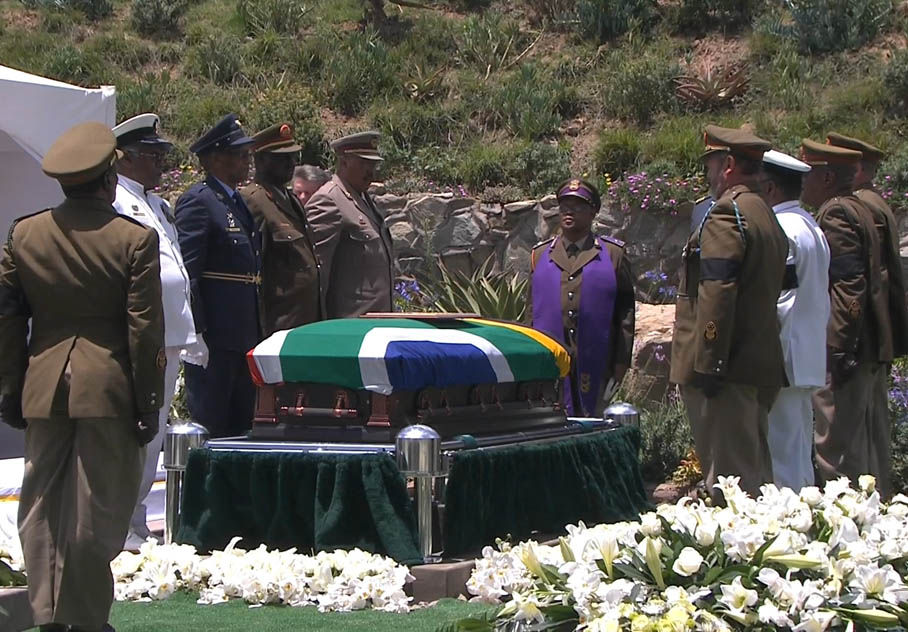
The world pays tribute to Mandela (slideshow)
As South Africans come to terms with the loss of former president Nelson Mandela, the rest of the world bids farewell to Madiba.

Pimples: Saving Madiba's rabbit (video)
Gwede, Mac and Blade try their best to stop the rabbit from whispering in Mandela's ear. But the elusive animal has some tricks up its sleeve.

Zapiro's best Madiba cartoons (slideshow)
From his toughest moments to his most triumphant, Madiba has been an inspiration. Here are some of our favourite Zapiro cartoons about him from 1994 to 2013.

Mandela: SA's greatest son laid to rest (slideshow)
The world watched as Nelson Mandela was finally laid to rest in his hometown of Qunu following a dignified and moving funeral ceremony on Sunday.
When I was offered the opportunity to attend the launch of Mandela: The Authorised Portrait, I jumped at the chance. I am from the United States, but if I had to name the most famous people in the world, Nelson Mandela would be at the top of my list.
I was in Chicago during his release from prison. While South Africans danced alongside Mandela as he was released, Chicagoans danced in front of the South African consulate in the US.
When Mandela came to New York to speak at the United Nations, I believe, every African in the US was glued to his or her television set. Some even made the trip to New York to catch a glimpse of him. But, many Africans could not get a taxi to the UN headquarters, because taxi drivers were reluctant to stop for African people. How ironic, to find victims of racism in "democratic" America, while the very icon of victory over the racist apartheid system was among them.
As a graduate student at North Western University, I could have gone anywhere in the world to do my journalistic training. But I chose South Africa -- Mandela's country.
So when I received the heavy, thick coffee-table book, I held it in my hands like a precious stone. On its cover, Mandela stared at me through a black-and-white photograph. I was already in awe and I hadn't even opened its covers.
The book begins with a foreword by UN Secretary General Kofi Annan.
"Once inside the general assembly, he had the vast chamber spellbound," wrote Annan, describing Mandela's last speech at the UN general assembly before he retired as president in 1998. Just reading those words, I got excited. I will be in the same room with my hero, my idol.
The book is full of wonderful photoÂgraphy, Mandela's letters, newspaper clips and other mementos. The photographs spanning 88 years of Mandela's life were so expressive that as I sat at my desk, tears came to my eyes. It was as if I was reliving the harsh experience of his time, the torturous treatment he received on Robben Island.
In preparation for the book launch, I washed my dreadlocks and wore my best suit. When I arrived at the Nelson Mandela Foundation the press room was already packed. All 100 seats were taken and there were at least another 100 people standing against the walls.
I had to go all the way to the back and squeeze in with my little Nikon camera between the big TV camcorders. I felt blessed to be there, though.
As I was taking the camera out of my bag, I noticed that none of the other photographers were using a flash. I wondered why, the room was not that bright. A photographer from a daily paper soon explained: "The flash hurts Mr Mandela's eyes. He quickly showed me how to set my camera so that I could shoot decent pictures without a flash. I would have to hold my breath when shooting to avoid getting blurry pictures, but I did not mind -- I was too excited: in a few minutes I would see Mandela with my own eyes -- in real life.
"No matter how well you prepare, the dynamics in the room changes when Mr Mandela walks in," the photographer said.
Sure enough, as soon as Mandela walked in, everybody stood up to honour him. Those of us at the back could not see a thing. On the tip of my toes, I lifted my camera and started shooting pictures blindly. As Mandela took his seat, he said something that I could not hear, but many in the room laughed. Just as Annan said in his forward: "[Mandela] was making everybody around him feel completely relaxed through his unique mix of humour, warmth, informality and dignity."
When the audience finally sat down, Mandela was sitting in a blue armchair, wearing his famous Madiba shirt. Next to him sat President Thabo Mbeki. I snapped photographs non-stop, zooming in, but wishing I had a more powerful lens. I wished I was right up front to shake Mandela's hand and tell him how much of an inspiration he is to me. I wished I could ask him to sign my copy of his book.
The master of ceremony was Ahmed Kathrada, Mandela's cellmate of 25 years. He constantly cracked jokes, making Mandela laugh.
"Now [this book] is going to be a bestseller [like] Long Walk To Freedom," he said. Kathrada is also the editorial consultant for Mandela's new book. "So I thought it's about time I should have a best seller. I think what I'm going to do is write a book called What Was Left Out of Long Walk to Freedom."
The whole room laughed.
"I can respond to libelous statements that Madiba uttered this morning," Kathrada continued. "He called me a crook. Actually I wasn't sentenced for being a crook, I was sentenced for being a saboteur. Tokyo [Sexwale] was sentenced for being a terrorist."
Laughter shook the room again.
Mandela did not speak at the book launch. However, I left the event inspired by his greatness and humility. I felt determined to be a better person. If Mandela had managed to pardon his torturers, then maybe I can manage to let go of anger in my own life.

